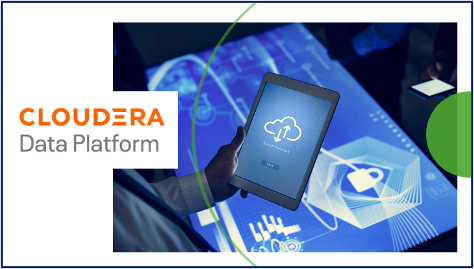
Cloudera has introduced three new AI-driven assistants to enhance its hybrid platform for data, analytics, and AI. Two of these tools are designed to help customers develop business applications more quickly, while the third one aims to provide better data visualizations than organizations typically get from their business intelligence solutions. Cloudera’s ongoing innovation and differentiation are essential in a competitive market that includes Databricks and Snowflake.
Founded in 2008, Cloudera initially focused on commercializing Apache Hadoop. In more recent years, Cloudera has adopted Apache Iceberg as a component of its Cloudera Data Platform (CDP). This integration spans CDP’s various components, including Cloudera Data Warehousing (CDW), Cloudera Data Engineering (CDE), and Cloudera Machine Learning (CML), enabling high-performance analytics, data engineering, and AI. Cloudera has also expanded its platform to include open-source tools such as Spark, an analytics engine for large-scale data processing, Impala, a SQL query engine for processing data, and Hive data warehouse software. The CDP also connects with Cloudera’s data-in-motion products, which integrate open-source technologies to enhance flexibility and scalability. This approach ensures better access to data across hybrid and multi-cloud environments. The CDP provides a unified data framework for both operational and analytic uses of data. It addresses needs in various areas including data engineering, streaming data, analytics, machine learning, and generative AI.
Cloudera’s enterprise focus enables customers to derive real-time insights from large data volumes. Most of Cloudera’s customers have plenty of data on-premises as well as in private or public clouds, and its data platform enables management and access across these hybrid environments.
Addressing Enterprise Challenges with AI
GenAI is becoming increasingly prevalent as enterprises leverage it to gain a competitive edge. Achieving success and realizing significant ROI from a GenAI implementation requires an emphasis on both data quality and effective change management. Cloudera’s new AI assistants are designed to support these efforts through their data deployment and application development processes. By enhancing data accuracy and facilitating integration, these AI assistants help businesses optimize their operations, improve efficiency, and maximize ROI.
- SQL AI Assistant: Simplifies the complexities of writing SQL queries using retrieval augmented generation (RAG) to generate and optimize queries. This helps with the challenges and barriers of SQL syntax for non-SQL experts. Users can describe their needs in natural language, and the assistant generates the appropriate SQL query, making it much easier to work with complex databases. For further insights on the increasing role of AI assistants for coding, see my colleague Jason Andersen’s recent pieces on AI assistants for Java coding being developed by IBM and Oracle.
- AI Chatbot in Cloudera Data Visualization: Uses enterprise data to provide business insights. This embedded chatbot presents contextualized analytics, allowing users to have more meaningful conversations with their data and access valuable information typically hidden in standard business intelligence tools. Users can ask questions in natural language; the chatbot matches these queries using relevant data and visuals for more actionable insights presented directly on Cloudera’s dashboard.
- Cloudera Copilot for Cloudera Machine Learning: Enhances the machine learning lifecycle. Cloudera integrates 130 pre-trained models and datasets from Hugging Face—a popular AI company that provides a variety of assets used for natural language processing and other AI tasks. Customers can now access the Hugging Face assets to reduce the complexity of building models from scratch. This integration with Cloudera’s existing data management and analytics tools creates an end-to-end ML solution. Cloudera Copilot supports the entire development process of AI applications. This allows IT organizations to navigate the complexities of deploying AI and ML models in production, accelerating development and delivering business value more rapidly.
By integrating AI assistants for SQL, BI, and ML into its platform, Cloudera is making AI more accessible and user-friendly. These AI assistants simplify complex tasks, improve data analysis, and enhance decision making.
Acquisition of Verta
Cloudera also recently acquired Verta’s Operational AI Platform, further strengthening its position in AI. Verta’s technology enables developers to create LLMs from datasets. This integration enhances Cloudera’s product offerings, providing customers with AI tools that improve data insights, scalability, and operational efficiency. Access to Verta’s technology and expertise can also accelerate Cloudera’s research and development efforts to promote further innovation.
Cloudera’s Challenges
Cloudera faces several challenges, including the now-outdated perception from some corners of the market that its architecture is based on an older, Hadoop-centric paradigm. In fact, the company has modernized to a cloud-native architecture by incorporating widely accepted open-source technologies such as Apache NiFi, Kafka, Flink, Spark, Impala, Ozone, Iceberg, and more. These efforts aim to update its workloads and improve its overall platform. Still, the setup and management of the CDP can be complex, making it less user-friendly compared to competitors such as Databricks and Snowflake. Some users say that Cloudera’s persona-based configurable interface mitigates this complexity. Additionally, Cloudera’s marketing efforts and branding have often lacked the impact needed to differentiate the company from its competitors, failing to effectively showcase its true business values.
Historically, the company focused primarily on on-premises solutions and was slower to adopt cloud solutions. This slower transition may have contributed to a lag in innovation and an ecosystem that was a less extensive for a while compared to its competitors—although company leaders believe that Cloudera has now made up that ground. In any case, Cloudera’s hybrid-first strategy now differentiates it, positioning the company as an open hybrid platform. This strategy is significant, considering that 85% of IT spending remains on-premises. Cloudera’s ecosystem includes enterprise AI partners such as NVIDIA, further enhancing its capabilities in the AI domain.
Future Focus
Introducing the new AI assistants is just one way that Cloudera aims to enhance its capabilities to improve platform usability and efficiency for a broader range of users. The company now has a cloud-first strategy, through which it offers more cloud solutions to go up against its competitors.
The company also aims to broaden its ecosystem and integrations for seamless interaction with other tools and platforms, providing a more comprehensive data management solution. Continued innovation, especially with AI-driven functionality, is critical for Cloudera to stay current with industry trends and meet evolving customer needs.























































































